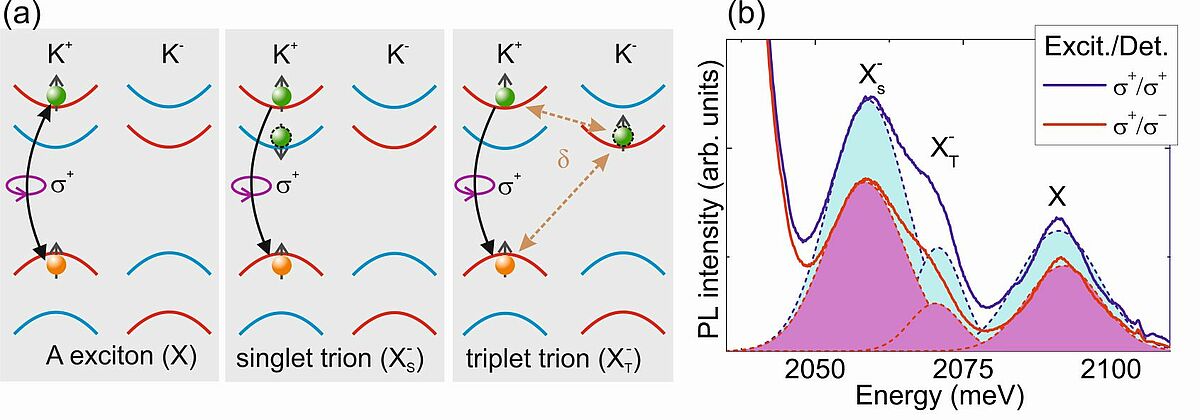Spatially resolved optical spectroscopy
Spatially resolved optical spectroscopy allows us to study the local structural and electronic properties oft wo-dimensional crystals and heterostructures.
(a) Low-frequency Raman spectra of ReS2 layers. (b) Raman-active shear and breathing modes at low Raman shifts are characteristic for this and other Van-der-Waals solids. The mode frequencies strongly depend on interlayer coupling and number of layers (siehe P. Nagler et al., Observation of anisotropic interlayer Raman modes in few-layer ReS2, Phys. Status Solidi RRL 10, 185 (2016)). (c-d) Micro-Raman-Spectroscopy allows us to generate false color maps of 2D crystals. Using the dependence of Raman modes on the number of layers, we can quantify layer thickness, as shown here for MoS2.
In materials without an inversion center, processes such as sum frequency generation (SHG) are allowed. This is the case for TMDs with an odd number of layers. In these structures, the SHG intensity depends on the orientation of the polarization relative to the crystal axes – thus, the relative crystallographic orientation of layers in a heterostructure can be determined optically (a), and the SHG signal may also be used for mapping (c). (see P. Nagler et al., Giant magnetic splitting inducing near-unity valley polarization in van der Waals heterostructures, Nature Comm. 8, 1551 (2017).)
(a) Due to the complex multi-valley band structure in tungsten disulfide, excitons and different types of trions form. (b) In the photoluminescence spectrum of a tungsten disulfide monolayer, the emission of different quasiparticles can be spectrally resolved (see G. Plechinger et al., Trion fine structure and coupled spin-valley dynamics in monolayer Tungsten Disulfide, Nature Comm. 7, 12715 (2016).)
(a) The combination of different TMDs yields a type-II heterostructure, in which electron-hole pairs are spatially separated. Due to strong Coulomb-interactions, they form interlayer excitons (IEX) that may recombine radiatively. (b) The photoluminescence spectrum of the heterostructure shows strong emission of the interlayer exciton at low energy. The emission of the individual monolayers is strongly suppressed.




